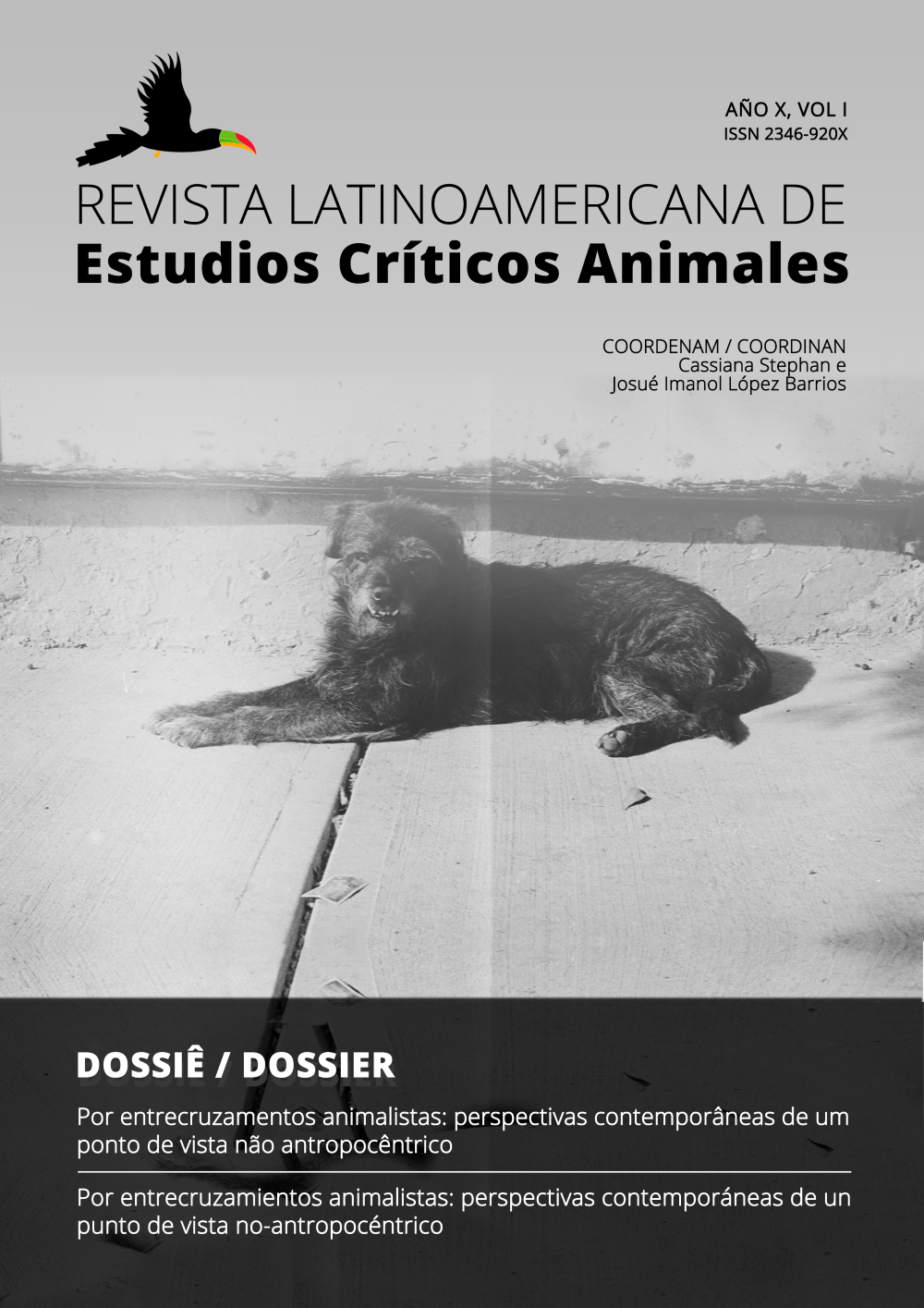TRACES OF AN ANIMAL WOMAN: BODY AND MEMORY OF JULIA PASTRANA, AN INVITATION TO A HISTORICAL IMAGINATION
Keywords:
Julia Pastrana, animality, femininity, freak showsAbstract
In this article, I seek to understand, through the historical reconstruction of Julia Pastrana's memory, to what extent the animalization of this woman justified the compulsory use of her body, both during her life and after her death, for economic purposes linked to the entertainment industry, which thoughtlessly mixed horror and comedy in the context of freak shows. Furthermore, I also seek to think about the ethical-political power concerning the articulation between femininity and animality. More precisely, my stance is far from being humanist: through the remembrance of Julia Pastrana, I question whether it is time to affirm the combative power of the bonds between femininity and animality.
References
Alexander, R. M. (2014). Mexico’s ‘Misnomered Bear Woman’: Science and Spectacle in the Sideshows of Nineteenth-Century Europe. The Journal of Popular Culture.
Barbata, L. A. (2017). The Eye of the Beholder: Julia Pastrana's Long Journey. Seattle: Lucia Marquand.
Bartra, R. (2017). Historias de Salvajes. Ciudad de México: Editores Siglo Veintiuno.
Bartra, R. (1992). El salvaje en el espejo. Distrito Federal: Ediciones Era UNAM.
Bartra, R. (2011). El mito del salvaje. Distrito Federal: Fondo de Cultura Económica.
Bondeson, J. & Miles, A.E.W. (1993). Julia Pastrana the Nondescript: An Example of Congenital, Generalized Hypertrichosis Terminalis with Gingival Hyperplasia. American Journal of Medical Genetics.
Beltrán Abarca, F.J. (2014). Los sirvientes domésticos en la ciudad de México, 1805-1853: Ciudadanía, mercado y regulación del trabajo. Tesis de maestría en Historia, UNAM.
Browne, J. & Sharon, M. (2003). Victorian Spectacle: Julia Pastrana, the Bearded and Hairy Female. Endeavour, 27(4), pp.155-159.
Buckland, F.T. (1868). The Female Nondescript Julia Pastrana, and Exhibition of Human Mummies. Curiosities of Natural History. Richard Bentley.
Cabanillas, N. (2011). Género y memoria en Sudáfrica post apartheid: la construcción de la noción de víctima en la Comisión de la Verdad y la reconciliación 1995 – 1998. Ciudad de México: El Colegio de México.
Craton, L. (2009). The Victorian Freak Show: The significance of disability and physical differences in 19th century fiction. New York: Cambria Press.
Crats, C. & Scully, P. (2009). Sara Baartman and the Hottentot Venus: A Ghost Story and a Biography. Princeton: Princeton University Press.
Foucault, M. (2006). Los Anormales. Buenos Aires: Fondo de Cultura Económica.
Garland-Thomson, R (2003). Making Freaks: Visual Rhetorics and the Spectacle of Julia Pastrana. Thinking the Limits of the Body. New York: State University of New York Press.
Gylseth, C.H. (2005). Julia Pastrana: The Tragic Story of the Victorian Ape Woman. Stroud: The History Press.
Haraway, D. (1999). Las promesas de los monstruos: Una política regeneradora para otros inapropiados/bles. Política y Sociedad, pp. 121-163.
Miles, A.E.W. (1974). Julia Pastrana, The Bearded Lady. Proceedings of the Royal Society of Medicine.
Paz, I. (1997). Algunas Campañas. México: Fondo de Cultura Económica.
Ricœur, P. (2004). La memoria, la historia, el olvido. Buenos Aires: Fondo de Cultura Económica.
Ruffer, M. (2010). La nación en escenas. Memoria pública y usos del pasado en contextos poscoloniales. Ciudad de México: El Colegio de México.
Stern, R. (2008). Our Bear Women, Ourselves: Affiliating with Julia Pastrana. Victorian Freaks: The Social Context of Freakery in Britain. Columbus: Ohio State UP.
Thompson, R.G. (1996). Extraordinary Bodies: Figuring Physical Disability in American. Culture and Literature. New York: Columbia UP.
Zavala, A. (2010). Becoming Modern, Becoming Tradition. Women, Gender and Representation in Mexican Art. Pennsylvania: The Pennsylvania State University.
• Enlaces y archivos buscados
American and Commercial Advertiser, “Trouble about a Hybrid”, 12 de noviembre de 1855.
“Archivo de Exayuntamiento de la Ciudad de México”. Ramos Diversiones Públicas, vol. 797. Legajo 2 Año 1811.
Dance portrait prints (visual works), ca. 1700-1900. TCS 50 (Pastrana, Julia). Cambridge: Harvard University Press. https://iiif.lib.harvard.edu/manifests/view/drs:47752375$4i.
El tiempo ilustrado. Uso raro de esposas difuntas, 06 de febrero de 1910.
Laura Anderson Barbata. http://www.lauraandersonbarbata.com/.
“Lyrics from The Singular History of Julia Pastrana”. Julia Pastrana Online: http://www.juliapastranaonline.com/items/show/122.
Sepelio de Julia Pastrana en el panteón Histórico Municipal de Sinaloa Municipio, 15 de febrero de 2013. https://www.youtube.com/watch?v=StZ2j2VnBRA.
Downloads
Published
Versions
- 2024-03-31 (2)
- 2023-06-28 (1)
Issue
Section
License
Copyright (c) 2024 Revista Latinoamericana de Estudios Críticos Animales

This work is licensed under a Creative Commons Attribution-NonCommercial-ShareAlike 4.0 International License.
La Revista Latinoamericana de Estudios Críticos Animales con ISSN 2346-920X se adhiere a las diferentes iniciativas que promueven el acceso libre al conocimiento, por lo que todos los contenidos de la misma son de acceso libre y gratuito y publicados bajo la licencia Creative Commons, que permite su difusión pero impide la alteración de la obra e incluye siempre mención al autor/a y fuente.
Es decir, una licencia de tipo Atribución-NoComercial-SinObraDerivada.
Por ello, los correos electrónicos de los autores se encontrarán a disposición de los lectores, en caso de que deseen contactarlos personalmente.




